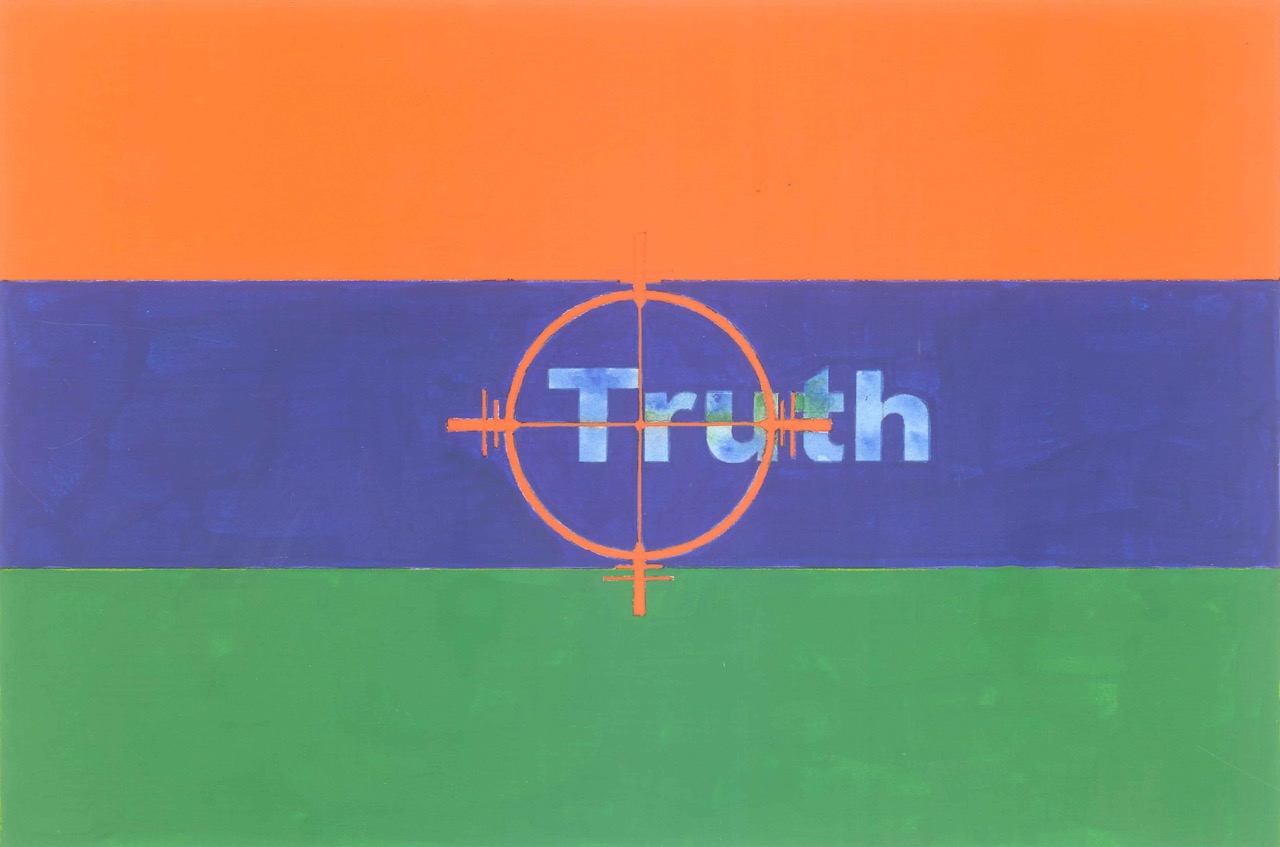
.
The Indian government looks on as right-wing Hindu extremists take deadly aim at some of the country’s bravest dissenters
If I were to describe Islam in three words, there is nothing there besides sex, crime and murder. So the question for you is not whether Rohingya will stay here or the Musulman will leave here…. Now, what’s the question is that everyone is being brought here (The banner in the back reads: Drive Out Rohingya Save India Protest.… Thank Modiji for saving Gujarat in 2002, otherwise we would have been surrounded from all sides. So, the question is only this, that you will have to repeat Gujarat 2002, there is only one solution, there is no other solution…. Are you ready for that thing?…. Look, our ancestors fought for us…. to keep us Hindu…. Can we say the same about us? That we can to do the same for the coming generation, or not?
—A man addressing a crowd at Delhi’s Jantar Mantar on October 7, 2017.
Some people in India are paying a heavy price for exercising their democratic right to freedom of expression. Others, like the scoundrel quoted above, are getting away with inciting violence against Muslims in public spaces. The day after the bigot’s tirade, the Indian government, exploiting the Rohingyas’ high profile in the global news, sent out a notice to all state governments asking them to block any undocumented immigrants from entering and to deport those already in the country. That included ethnic Rohingya refugees, of whom there are around 40,000 now in India.
Nationalism is not the awakening of nations to self-consciousness; it invents nations where they do not exist.
— Ernest Gellner, Thought and Change, 1964.
The link that connects seven of India’s bravest dissenters — Ram Chander Chhatrapati, Narendra Dabholkar, Govind Pansare, M. M. Kalburgi, Gauri Lankesh, Shantanu Bhowmick and Kancha Ilaiah, is the coward state, with its strongarms hanging limp at its sides, watching the country’s extremists play out their dream (nightmare for Dalits, Adivasis, along with countless women, Muslims, other religious minorities, journalists, rationalists, and others) of mutating India into a Hindu nation-state by hook or by crook.
Emboldened by the Indian state’s passivity, other peripheral fanatic factions—including godmen, warring political parties, and privileged upper-caste communities—are cranking out bling, multiplying the numbers of their blind followers, and killing innocents with impunity.
The first five of the heroic dissenters named above were assassinated at point-blank range by motorcycle-borne stooges of the country’s political elite; the sixth, journalist Shantanu Bhowmick, was beaten and stabbed to death. There are new developments ensuing daily with regard to writer Kancha Ilaiah’s predicament; you will read about them in the course of this article.
Killed on November 21, 2002
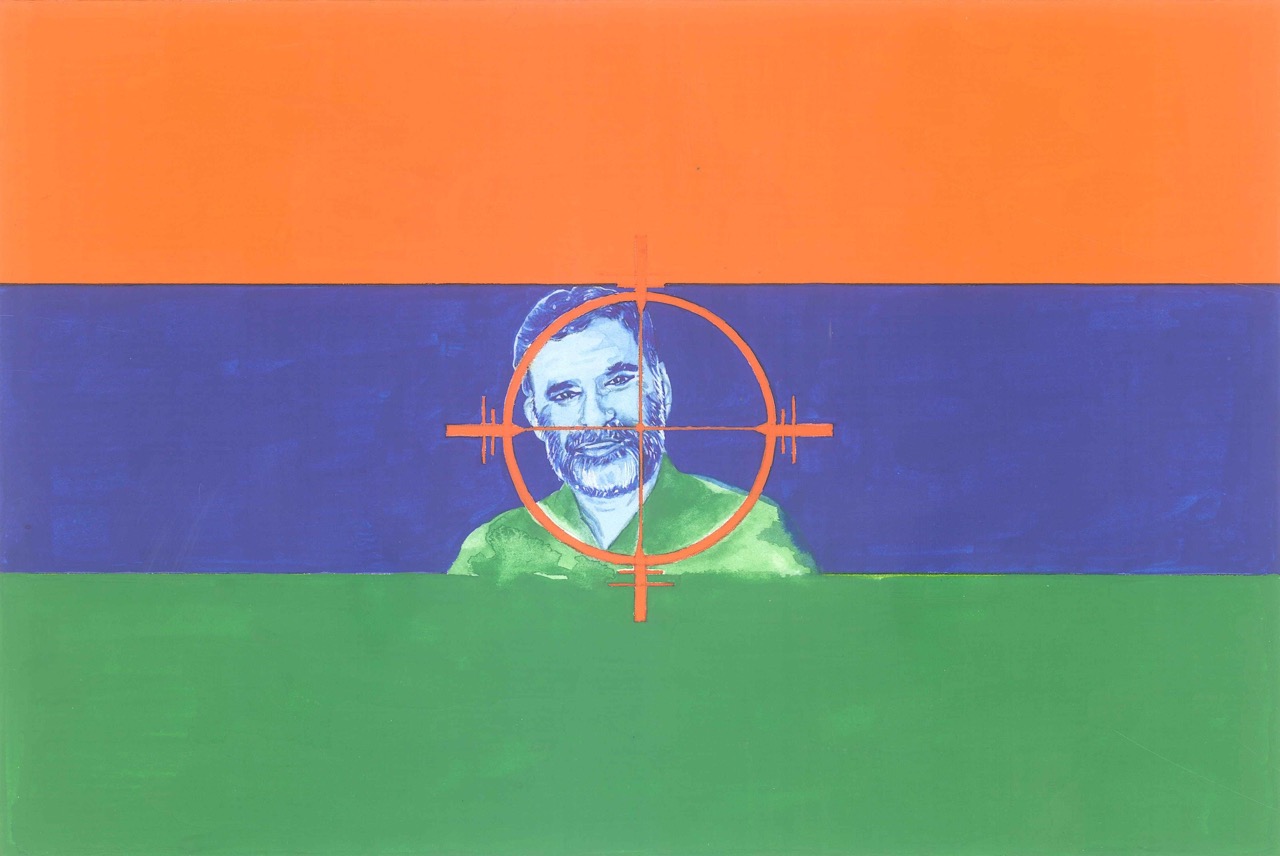
.
Sach aur jhooth ke beech koi teesri cheez nahi hoti (There is only truth and lies, there’s nothing in between.)
— Ram Chander Chhatrapati, editor of Poora Sach (The Complete Truth), Sirsa, Haryana.
On August 25, 2017, the self-proclaimed “Guru of Bling,” Dera Sacha Sauda chief “Maharaj” Gurmeet Ram Rahim Singh was sentenced, 15 years after the fact, to 20 years imprisonment on charges of raping two of his sadhvis (female disciples). We all heard about that. But something else also happened fifteen years ago that involved the “Guru” and his sect, and most of us know bling little about it.
At the end of May, 2002, only about three months after the founding of Chhatrapati’s evening daily Poora Sach, the publication revealed details of an anonymous letter from a sadhvi alleging that she, along with others, was being sexually harassed and raped by Ram Rahim. The rest is history — some known, some not so known. Along with Chhatrapati, the Dera manager Ranjit Singh was also murdered in 2002. Ram Rahim is accused of both murders, “as these were carried out allegedly at his behest.”
Killed on August 20, 2013
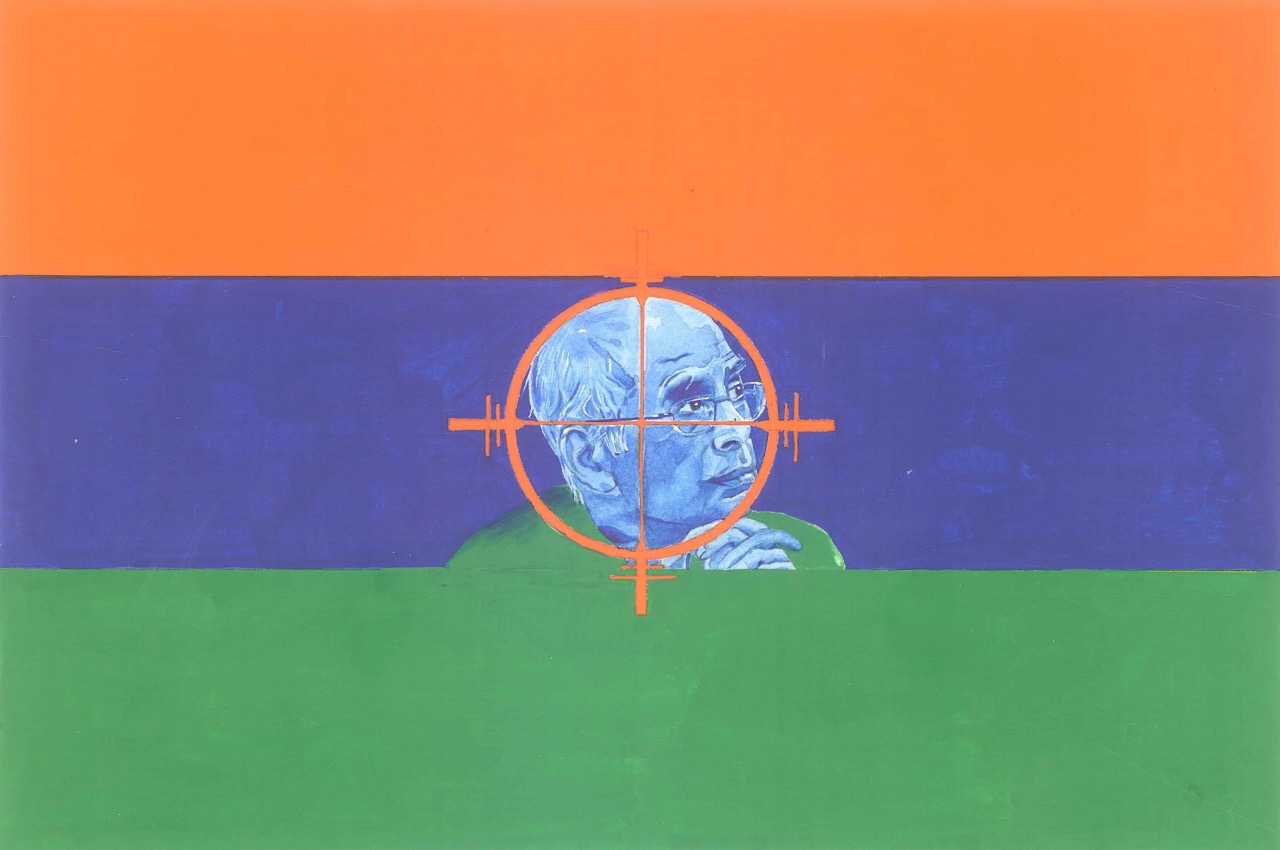
.
In Maharashtra, each year around one crore [10 million] families bring the idol of Ganesha at home to celebrate Ganesha Chaturthi. Each idol weighs around two kilograms. Most of these idols are made up of plaster of Paris and painted with chemical colors. This means each year around two crore kilograms of these harmful chemicals are released into waterbodies, causing blockage and poisoning. To prevent this dire environmental situation, we launched a movement and appealed to the people to donate their idols to the committee, instead of immersing them in the river. The movement received a tremendous response. We collect thirty to forty thousand Ganesha idols from different parts of Maharashtra. But since the last two years the Hindu Janjagaran Samiti has begun to oppose this movement vehemently. Their position is, let there be water pollution, but the idols must be immersed into the flowing river as sanctioned by the scriptures.
— Narendra Dabholkar rationalist and author, Satara, Maharashtra.
Narendra Dabholkar was one of India’s eminent rationalists. Described by some Hindu fanatics as a dharma drohi (an enemy of religion), Dabholkar committed his life to the eradication of andh vishvaas (blind faith) and the uprooting of exploitative superstition. In 1989 he founded the Maharashtra Andhashraddha Nirmoolan Samiti (Committee for the Eradication of Blind Faith in Maharashtra [MANS]) and authored twelve books aimed at fostering scientific thinking among the Indian people, including one titled Vivekachi Pataka Gheu Khandyavari (Let Us Shoulder the Flag of Rationalism.) He was a victim of threats and assaults by Hindu extremists throughout those years.
Killed on February 20, 2015
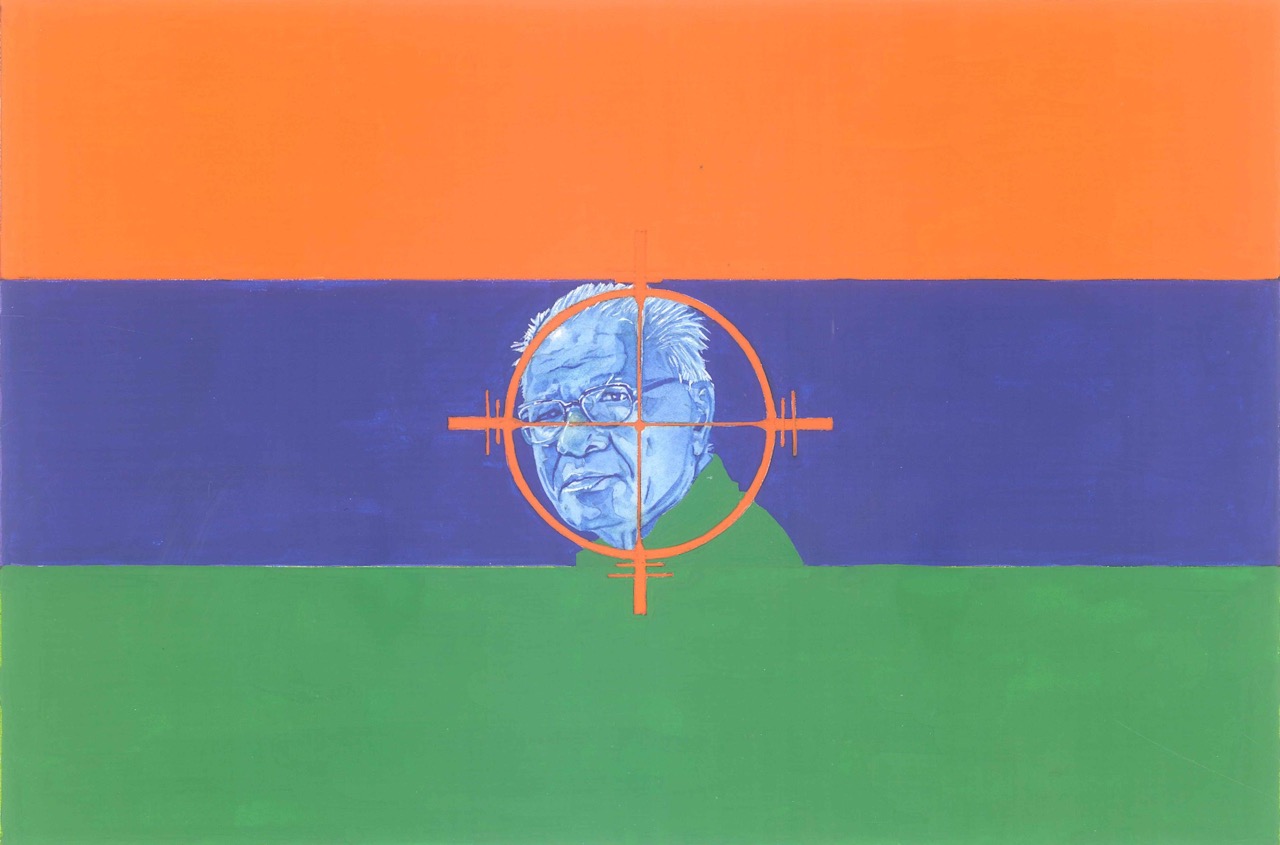
.
Dabholkar’s assassination is an indicator that there’re fundamentalists and fascists among us who want to quell all rational voices with violence…. It is the Sangh [Rashtria Swayamsevak Sangh (RSS), a cultural guild] that decides who should speak, what and when. The Sangh is the boss, the rest, subsidiaries. The Sangh determines the policy, others merely implement it, and so goes its style of functioning…. There is a reason why the caste of Mahatma Gandhi’s murderers should be made public. Of course, they were all Brahmins…. [Gandhi] was against inequality…. He was murdered for it.
— Govind Pansare, lawyer, trade unionist, author of Shivaji Kaun Hota (Who Was Shivaji), and member of the Communist Party of India, Bombay.
Pansare was front and center in hammering away on the role played by Hindutva ideologues in the assassination of Mahatma Gandhi. On the evening of August 20, 2013, as Narendra Dabholkar’s body lay at rest in his home in Satara, Govind Pansare was there. Standing beside his comrade’s body, he said many things, including the first part of the statement above. A year and a half later, Pansare’s words of reason were silenced by the same forces of unreason.
Killed on August 30, 2015
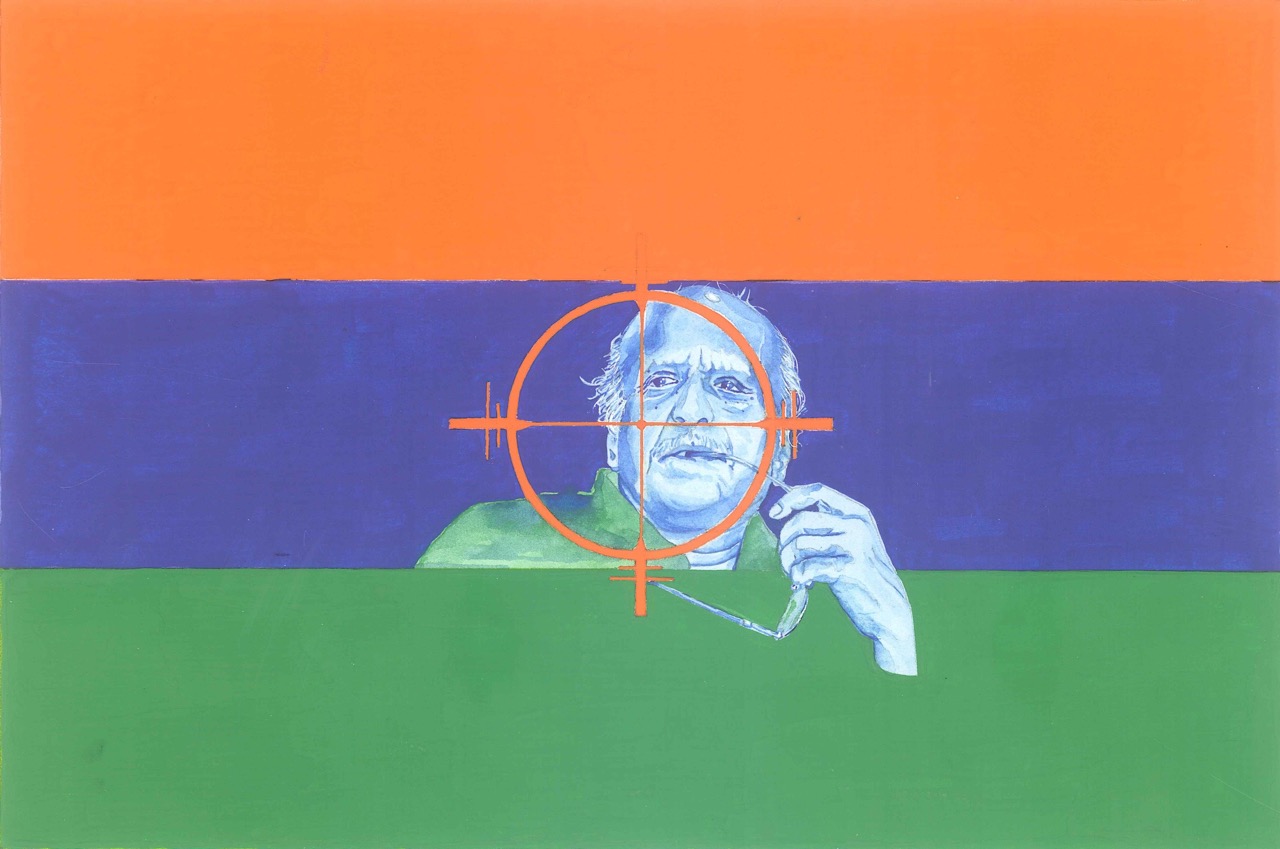
.
Of late artificial changes are being introduced instead of genuine ones in society thanks to religious and political leaders. The researcher needs to unravel actual history in order to stop the exploitation caused by such false history. Research is not a purely historical exploration but a struggle with those who invoke false history to profit from the present.
— M. M. Kalburgi, former vice-chancellor of Kannada University, Research Scholar of Old Kannada, Dharwad, Karnataka.
M. M. Kalburgi, was a prolific writer, and most importantly, he was a tireless truth seeker. In the same year in which Dabholkar founded MANS, the politically and financially powerful Lingayat community of Karnataka cracked down hard on certain views expressed by Kalburgi. One of those views involved the arcane issue of the birth of the saint-poet Channabasavanna. Having hurt the Lingayat’s fragile orthodox feelings, Kalburgi was forced to recant in April, 1989. Afterward, Kalburgi explained, “I did it to save the lives of my family. But I also committed intellectual suicide on that day."
Kalburgi went on to declare that Lingayatism was never part of Hinduism. Attacking Hinduism’s caste system was a regular feature in his writings. India’s current government in power, the Bharatiya Janata Party (the political wing of the RSS) was voted to power for the first time in Karnataka in the 2004 polls, with B.S. Yeddyurappa, a Lingayat, as the party’s chief minister. Both Hindu extremists and the mainstream orthodox Lingayats hated Kalburgi’s guts.
___
“I am Losing Faith,” says Kancha Ilaiah. On September 25, 2017, two days after a mob attacked the car he was driving in, intending to harm him, he announced that he was going into self-imposed house arrest. He also said that “In my two petitions at Osmania [University] I requested for strong police protection at my house. That is also not provided.”
—–
Killed on September 5, 2017
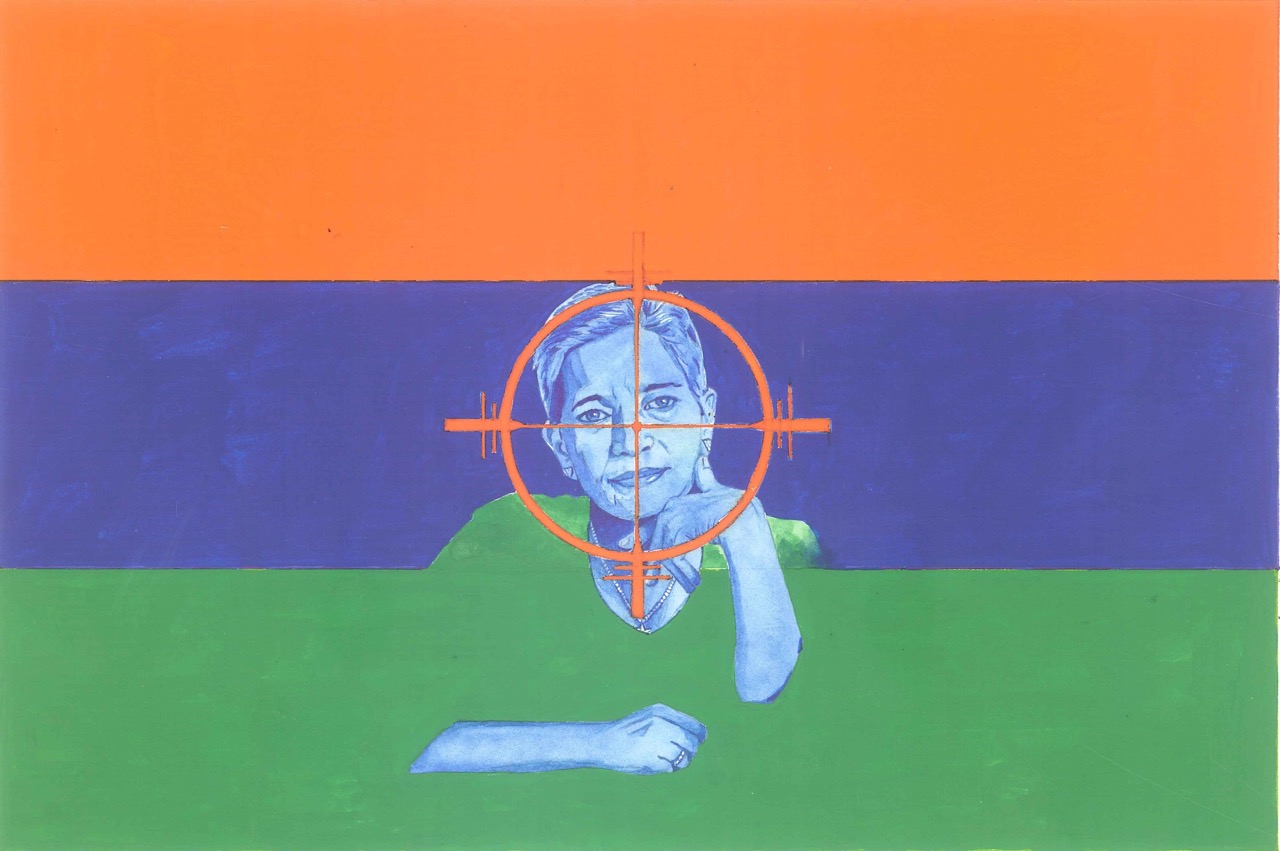
.
Whether it is attacks on pubs…. in the name of culture and protection of women, or whether it’s attacks on Dalits…. in the name of cow protection, or attacks on liberals and leftists in the name of Hindutva…. when Kalburgi was killed, one Bajrang Dal [youth wing of the Vishwa Hindu Parishad (VHP), affiliated with the RSS] guy called Bhuvith Shetty, he sent a tweet saying that anyone who criticizes Hinduism will die a dog’s death…. Last week, after the court convicted fraud guru Gurmeet Ram Rahim for rape, his photos with several BJP leaders went viral on social media. Photos and videos of Prime Minister Narendra Modi and several Haryana BJP ministers were circulating. It irked the BJP and the Sangh. To counter this, they circulated a photo of Kerala chief minister and CPM leader Pinarayi Vijayan sitting with Ram Rahim. It was a photoshopped image…. What is most shocking and sad is that people accepted it [fake news] as truth without thinking with their eyes and ears closed and brains shut off.
— Gauri Lankesh, journalist, Bangalore, Karnataka.
“Are Rohingya ‘terrorists’ killing Hindus and burning their homes & temples? Read verified, not fake news.”
That was the last tweet that Gauri Lankesh posted. Lankesh was the editor of the weekly Kannada tabloid Gauri Lankesh Patrika, described by some as an “anti-establishment” publication. She took on everything and everyone that indulged in right-wing divisive politics: the BJP, Hindutva ideologues, dominant-caste Indians, mob violence, hate crimes, lynchings. And she stood for all of their victims: Dalits, Adivasis, Muslims, and other religious minorities.
The assassins of Dabholkar, Pansare, Kalburgi, and Lankesh are yet to be brought to book. The Bombay High Court said recently that “People with liberal values and principles are being targeted. It’s like if there is any opposition to me, I shall have that eliminated. This is a dangerous trend which is giving a bad name to our country.”
—–
A month after the Court's statement, emerging from his “house arrest” on October 5 (his birthday), Kancha Ilaiah stated that the central government should be held responsible if he is murdered.
____
Killed on September 20, 2017
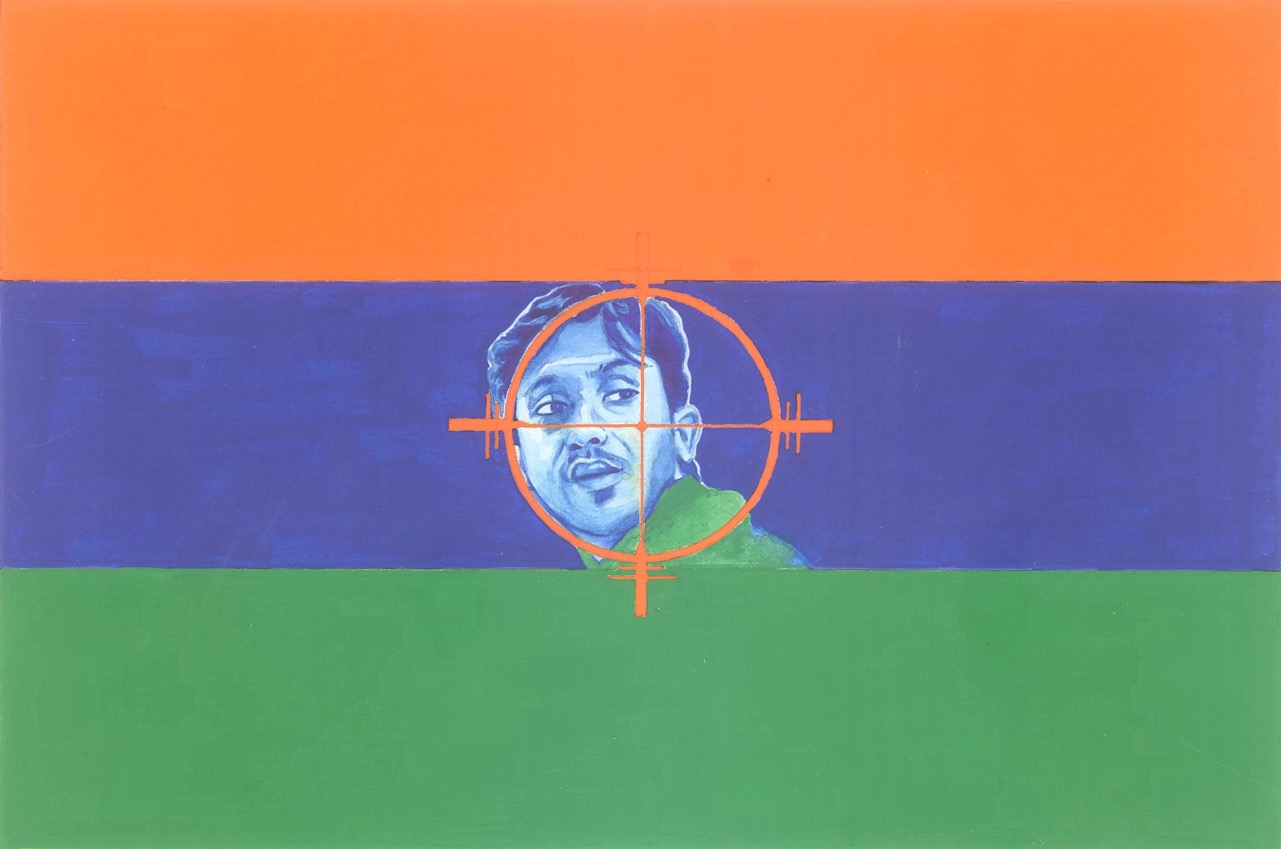
.
Bhowmick was beaten and stabbed to death in Mandai, on the outskirts of Agartala, the state capital [of Tripura], where the local TV station Dinraat (“Day and Night”) had sent him to cover the clashes between police and members of the Indigenous People’s Front of Tripura (IPFT), a local tribal-based party that issued a call yesterday for acts of violence against a rival faction…. Bhowmick was the second journalist to be murdered in the past two weeks in India, following Gauri Lankesh, a well-known woman journalist gunned down in the southern city of Bangalore on 5 September.
— Reporters Without Borders.
Attacks on media freedom are becoming increasingly commonplace around the world “especially in democracies,” claims Reporters Without Borders (RSF). Out of 180 countries, India is ranked number 136 in RSF’s 2017 World Press Freedom Index.
Fatwa issued on September 18, 2017
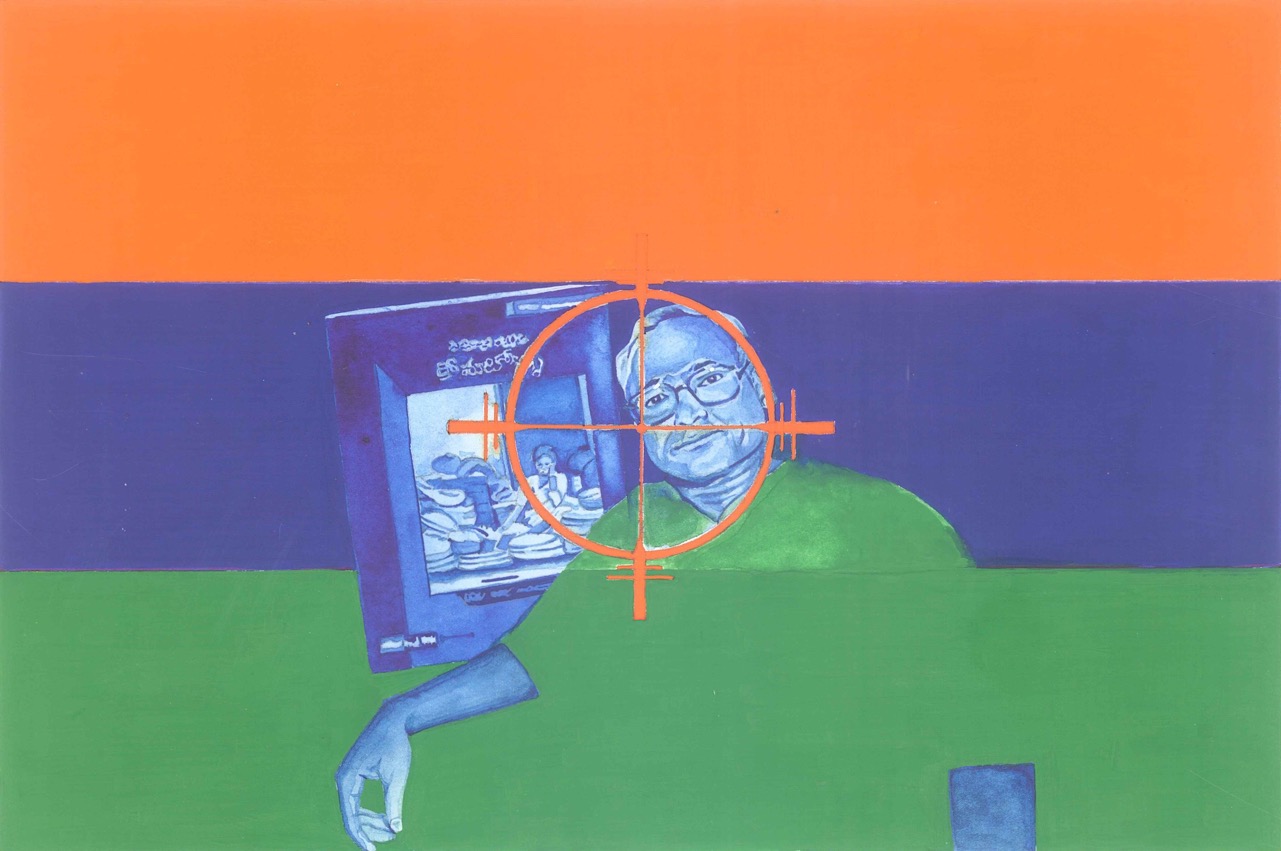
.
Indian exploitation has a massive component of the use of caste ‘social borders’ to control the accumulated wealth within that border of heavily exploited wealth. It was used by the traders for their good life and gave enough to the temples for better survival of priests. The remaining surplus was hidden under ground, over ground and also in the temples. This process did not allow the cash economy to come back in the form of investment either for agrarian development or for promotion of mercantile capital. This whole process is nothing but social smuggling. The wealth did not go outside India but did get arrested and used only within the caste borders.This process is continuing even now in different modes. In all grain markets, the Shahukars [moneylenders] are the main buyers of the produce who get it for very low cost from the farmers and sell the same goods for huge prices.
—Kancha Ilaiah, Director, Centre for the Study of Social Exclusion and Inclusive Policy, author of Why I Am Not A Hindu, Hyderabad.
History repeats itself constantly in uppercaste-noxious India. Like Kalburgi, Kancha Ilaiah is today a victim of the pathetic boo-hooing of the privileged. His writings have been condemned on TV; death threats have been issued against him; someone threatened to cut off his tongue; his effigies have been burnt along with his booklet; on September 23 he and his traveling companions narrowly dodged a “murderous attack at Parakal, Bhupalpally district…. by the Arya-Vysya forces at 4.45 pm,” and more recently, the Hyderabad police registered a case against him.
Kancha Ilaiah’s controversial book, Samajika Smugglurlu Komatollu (Vysyas Are Social Smugglers) has thoroughly upset the emotionally delicate Arya-Vysya (trader/bania) community of Andhra Pradesh and Telangana, who find the title and contents of the book derogatory and demeaning. The Telugu Desam Party (TDP) MP T.G. Venkatesh even issued a Hindu version of a fatwa against him, calling for a public hanging. The MP later took it back, saying that “he did not mean ‘fatwa’ as he was carried away emotionally. However, he warned that things will go out of control if the book was not banned.”
Well, I have news for you, MP Venkatesh. Things are already “out of control” in JatiIndia. Every reasonable voice, scientific analysis, environmental action, historical research, or challenge to hard-wired upper-caste privilege is at risk of being silenced by a coward state that is okay with the torrent of violence and threats that is ripping the threads of justice apart, one dissenter at a time.
On October 14, there was a small victory for the Indian Democracy, and Kancha Ilaiah. Samajika Smugglurlu Komatollu will not be banned. The Supreme Court of India dismissed a “public interest” litigation filed before it by an Arya-Vysya advocate seeking to ban Ilaiah’s book. Said Ilaiah, “This has reaffirmed my faith in the Indian Judiciary, Constitution and Democracy. I thank all the social forces, political parties, organizations, media that stood by me and also for the right to freedom of expression.”
Now, Kancha Ilaiah’s predicament is back in the hands of Indian democracy, which needs to get him out of the gun sights of the Arya-Vysya troublemakers and punish severely anyone who threatens him.
___
Note: India’s dissenters featured here are #s 12 through 18 in my continuing series JatiIndia Flags of Atrocities Caste, Present and Future. The color orange in the flag symbolizes long-existing casteism, now made more open and feverish by resurgent Hindutva politics. Blue—a color historically adopted by the Dalit movement—here honors all of India’s and occupied Kashmir’s oppressed people and those who fight and die for them. The bottom green bar embodies India’s ecological foundations, which are endangered by the ideology of neoliberalism and defended by our Adivasis and other oppressed people, including Kashmiris. The circular image in the center signifies a target viewed through a weapon’s saffron (Hindu nationalist) crosshairs.
Priti Gulati Cox (@PritiGCox) is an interdisciplinary artist. She lives in Salina, Kansas. Please click here to see more of her work.
